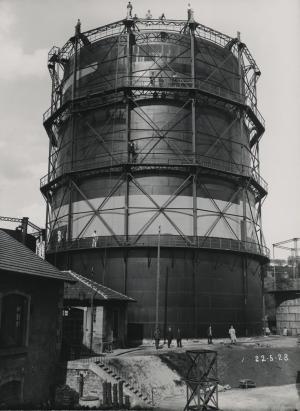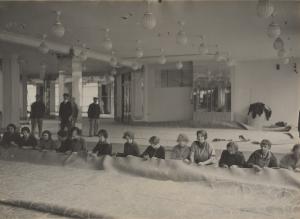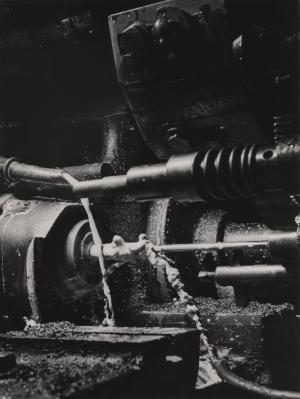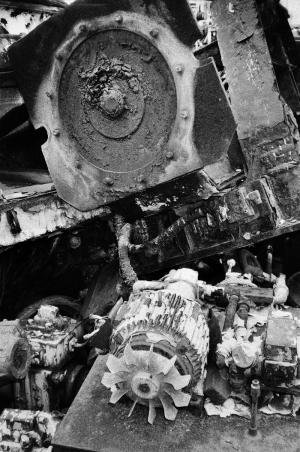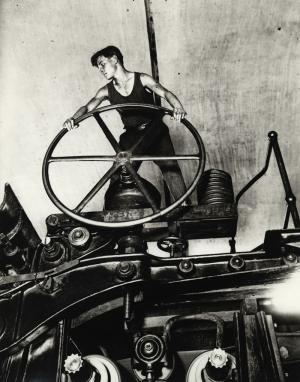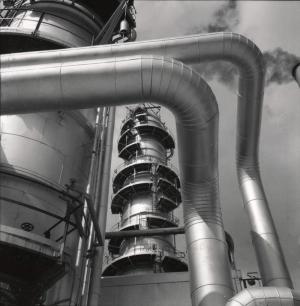
Inoxydable (Stainless)
28.06 … 21.09.2025
Opening reception June 28th at 10:30
Dowload the press kit here
This show includes a number of pieces on loan from:
Bibliothèque Jean Laude, Saint-Etienne
Bibliothèque municipale, Dijon
CRP/ Centre régional de la photographie, Hauts-de-France
MAMC+ / Musée d'art moderne et contemporain de Saint-Étienne Métropole
Prints of pieces by Valérie Couteron and François Deladerrière were produced by the Musée Nicéphore Niépce in its lab using Canson Infinity paper with support from our patron Canson.
A publication entitled “La vie silencieuse de l’industrie” from Bec en l’air, chronicles Jean-Pierre Sudre’s work on industry during the post-war years.
Curators:
Anne-Céline Callens,
Sylvain Besson, Musée Nicéphore Niépce
Graphic Design:
Le Petit Didier/ Nicolas Pleutret
Photography can be said to be a product of the 19th century as it was born and developed alongside the Industrial Revolution and accompanied the mechanisation of the world. From Nicéphore Niépce’s first empirical experiments between 1816 and 1833 to the integrated sensors on today’s increasingly updated and automated Smartphones, photography and technological change have always gone hand in hand.
From the very beginning, industry, even in its infancy, was a photographic subject in and of itself. What better way than photography to capture and spread the word about progress and technological advances? Enlightened amateurs captured the buildings that made them wealthy and showcased their success, in the interest of posterity. For example, in the mid-19th century, the Chalon-based businessman Joseph-Fortuné Petiot-Groffier
used his camera and collodion plates to immortalise his factory and produced his own prints using salted paper.
George Eastman burst onto the scene at the end of the 19th century and definitively dispensed with photography’s artisanal status. Subsequent inventions such as the ready-to-use camera and strip film marked a turning point with cheaper materials and smaller, mass-produced cameras and film, etc. These revolutions established photography as the centre point of visual culture and image production in society. Photography, as a medium, was an industrial object and as such, was used extensively in other industries.
Industrial photography became widespread very quickly and was common in a range of categories including architectural views (interiors and exteriors of buildings), machines, workers and products. Photographers during the inter-war period were actively involved in a booming industry themselves and as such were fascinated by industry and the industrialisation of society so it was only natural that they document this progress. They included René Zuber, Régis Lebrun, André Steiner, Pierre Boucher, Jean Moral and the Soviet Constructivists
, among others. Magazines (VU, Art et Médecine) and communication materials (posters, brochures, etc.) flourished thanks to developments in printing and layout processes and photographers found work illustrating, documenting, and promoting all types of industries. This mutually beneficial development led to a boom for industrial photographers, photography and publishing that reached its apex between 1931 and 1935 with François Kollar’s
La France travaille
. Publishing house Editions Paul Martial
also began to provide services to industries for the production of their advertising and communication materials, bringing together a range of professions under one roof (photographers, graphic artists and printers).
The post-war boom period, known in France as Les Trente Glorieuses
was a golden age for industrialisation with photography as its cheerleader and main form of communication. Everything needed to be rebuilt with support from governments so building and being seen to build were equally important. Photographers like André Papillon
began to specialise and he gave up his job as a reportage photographer and set up a studio dedicated to industry and advertising. Others, like Jean-Pierre Sudre,
used the money they earned as commercial photographers to finance their more personal work. Photographers were fascinated by industry and the subjects varied little, from architecture to machines, from workers to products, and while, from time to time, some managed to add their own personal touch, the industrialised nature of the commission led to the standardisation of the pictures produced.
Today, due to the way globalisation and free trade have thrown the industrial system off balance and led to widespread outsourcing, commissions are increasingly rare. Photographers still work in advertising and some industries still commission architectural photography, but the post-war boom is definitely a thing of the past. Many photographers such as Mitch Epstein, Stéphane Couturier, Claire Chevrier, Stephen Dock, Valérie Couteron, Bertrand Meunier, François Deladerrière and Sylvie Bonnot have focused on deindustrialisation in their work, depicting the end of an era and reinterpreting the codes of industrial photography, all the better to question them. They use the medium of photography to examine manual labour or to explore potential futures for industrial architecture sites that are now obsolete.
